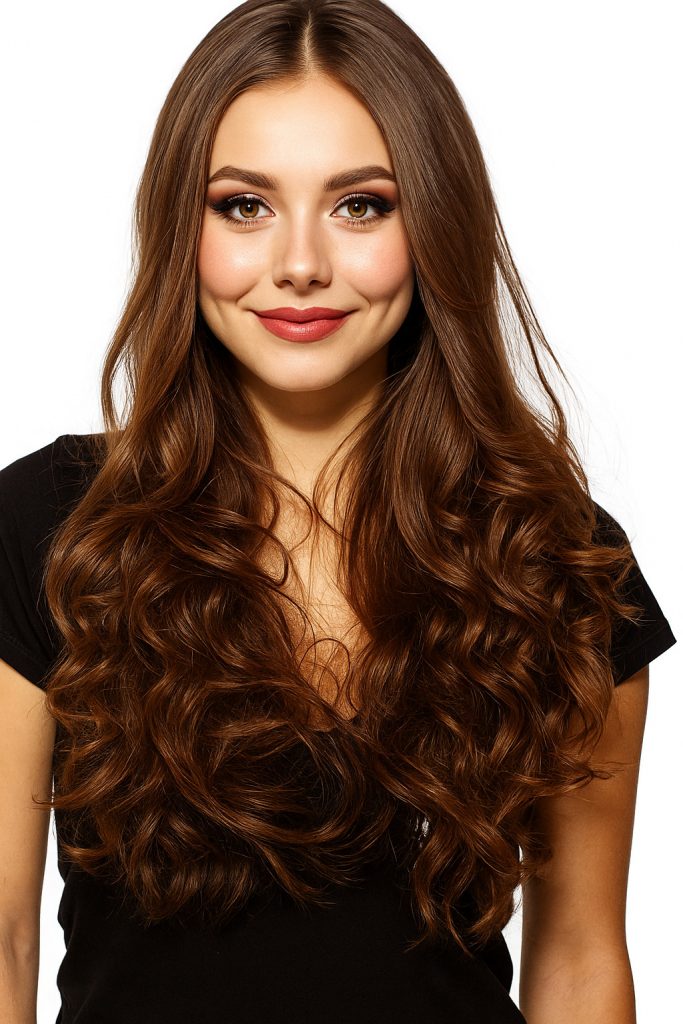
Thin hair can sometimes feel limiting, especially if you love experimenting with different hairstyles. Fortunately, hair extensions offer a flexible solution to achieve fuller, thicker-looking locks without permanent commitment. Choosing the right type of extension and maintaining it properly is key to keeping your hair healthy and natural-looking.
Understanding Hair Extensions for Thin Hair
Not all hair extensions are suitable for fine or delicate hair. When selecting extensions, consider these factors:
- Weight and density: Extensions should add volume without overloading your natural hair.
- Hair type and texture: Match the extension texture to your natural hair for a seamless blend.
- Application method: Some extensions are gentle, while others require more permanent installation.
Extensions that are too heavy or poorly applied can cause breakage, tangling, or hair loss over time.
Top Extension Options
Halo Extensions
Halo extensions are perfect for thin hair. They consist of a single weft attached to a clear wire that sits on the head like a halo. This design provides instant volume without glue or clips, making them easy to wear and remove.
Tape-In Extensions
Tape-in extensions are lightweight and virtually invisible. They lie flat against the scalp, blending naturally with your hair. Professional installation and removal are recommended to avoid damage.
Clip-In Extensions
Clip-in extensions allow you to switch styles quickly. They are ideal for occasional wear or experimenting with length and volume. Be cautious if your hair is extremely fine, as heavy clips may cause stress.
Sew-In and Fusion Extensions
For a longer-lasting option, sew-in or fusion extensions can be used, but they require professional application. Lightweight, hand-tied wefts minimize tension on your hair. Fusion extensions bond strands with keratin, lasting for months with proper care.
Choosing the Right Extensions
When selecting hair extensions, keep these points in mind:
- Length and density: Avoid overly long extensions that could strain thin hair. Medium lengths are versatile, while short extensions offer subtle enhancement.
- Hair quality: Human hair—especially Remy or virgin hair—looks natural and allows for styling flexibility. Synthetic options are more affordable but less realistic.
- Color match: Choose extensions that closely match your natural shade. Slightly lighter tones can be customized to match perfectly.
A professional stylist can help determine the best combination of length, weight, and style for your hair type.
Maintenance Tips
Proper care extends the life of your extensions and keeps them looking natural:
- Use sulfate-free shampoo and conditioner to prevent dryness.
- Brush gently from ends to roots with a wide-tooth comb or extension-specific brush.
- Apply leave-in conditioner or hair masks weekly to keep strands soft and tangle-free.
- Limit heat styling and always use a heat protectant.
For safe removal, follow your stylist’s instructions. Store extensions carefully to prevent tangling or deformation.
Alternatives to Hair Extensions
If you want to avoid extensions or are experiencing hair thinning:
- Wigs and hairpieces: Offer instant volume and versatility, without stressing natural hair. Modern options are lightweight, breathable, and realistic.
- Hair growth treatments: Options like Minoxidil, prescription medications, PRP therapy, or laser treatments can improve hair density over time. Consult a professional before starting any treatment.
Final Thoughts
With the right extensions and proper care, thin hair can look fuller, healthier, and more versatile. Choose lightweight, high-quality options, maintain them carefully, and consult a stylist when needed. Whether it’s a temporary volume boost or a more permanent solution, there’s a method to suit every thin-haired individual.